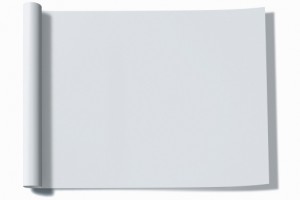The Pros and Cons of Fixed Header Bars
Increasingly, online advertisers face the challenges of remaining visible, relevant, and engaging. Those just beginning their web design careers and seasoned veterans alike are always on the lookout for trends and advancements that can help their clients stand out.
One of the new toys that developers and designers have been tinkering with are Fixed Header Bars (a/k/a "sticky navigation"). These static menus hold their place at the top of the browser window as readers scroll down, keeping options at eye level.
But the latest thing isn't always the greatest thing. Consider the needs of the advertiser and their target audience when implementing this design strategy, as well as some of these pros and cons.
The Good
People like them. Industry experts Smashing Magazine conducted a study that indicated 100% of visitors polled preferred fixed header bars, without even knowing why. Short of the word "free," it would be difficult to find another tool that so drastically improved user response.
They Prevent Leaks. Having ever-present navigation retains leads. When readers end up halfway down a page without a convenient way to move around, they resort to using familiar tools. More often than not, this includes the dreaded "back" button!
They Expedite the Process. The same Smashing study indicated that fixed headers are 22% faster to navigate. Although this number may not seem significant, it matters tremendously in a world where delays lasting literally as long as the blink of an eye can cost leads.
They Allow Flexibility. For these reasons, employing fixed headers can allow greater design options. Creating a hot, vertically-scrolling page wouldn't be feasible without sticky nav.
The Bad and The Ugly
Lost in Translation. Mobile developers need to consider this limitation especially; sticky navigation with the "fixed" element does not always render effectively on mobile and tablet devices. Thorough compatibility testing should be conducted prior to release, and visionaries need to be ready to part with those pretty pixels if necessary.
When Headers Attack. Sometimes "sticky nav" can make visitors feel violated. A fixed header that is too intrusive, distracting, jerky, or buggy will turn readers off. If the header interferes with the content, readers will hate the site, not in spite of, but because of their interest in it. The whole point of providing easy menu access is lost if an audience is so annoyed by it that they resort to the good old "back" button just to feel normal again. Don't overdo it.
This can be remedied by employing visual elements that help divide the two areas - using banners and ribbons, for example, or creating a subtle disruption with color or text style.
You Say Po-tah-to. When considering fixed header bars, keep viewer's personas and the needs of the advertiser in mind. The same trendy technique that sells hosting to startups like hotcakes will not likely appeal to seniors interested in life insurance.
It's tempting to employ trendy technology just for the sake of fun. Trying new tricks is stimulating and challenging. But as enticing as it may be, the best designers are always those who assess and fully realize the needs of their clients.
Helena L is a freelance writer available on WriterAccess, a marketplace where clients and expert writers connect for assignments.
___________________________________
Artisan Talent is a Digital, Marketing and Creative Staffing Firm placing talent in jobs perfectly matched with their skills all over the US. For available jobs, to submit your resume, or learn more about working with Artisan Talent, contact us here.
Connect with Us
Linked In| Glassdoor| Facebook | Twitter | Instagram | Pinterest


